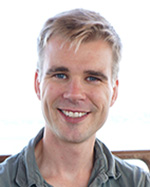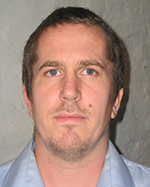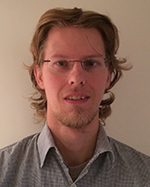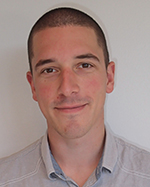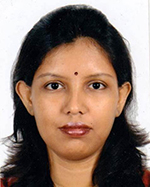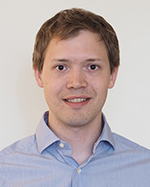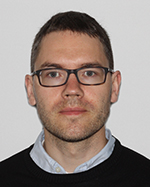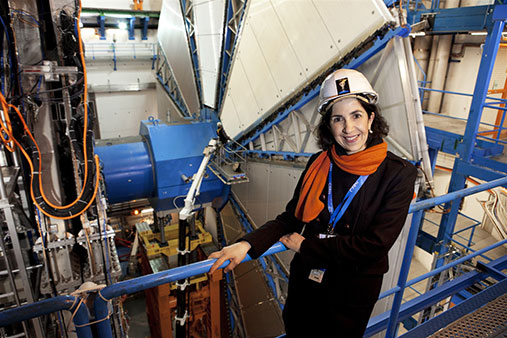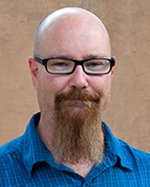Tidligere arrangementer - Side 29
Abram Krislock, UiO
During Supersymmetry phenomenology research, involving simulations of the Large Hadron Collider experiments, a certain mistrust of data analysis using common histograms arose. Someone once said, "Change the bins and try the fit again..." A quest began to eliminate the bins entirely. After a recent study, it was clear that a deeper understanding of statistics was needed to complete this quest. A new probability calculus was discovered, leading to an interesting new data smoothing technique.
Each year in spring, research institutes and universities around the world invite high-school students for a day-long programme to experience life at the forefront of basic research. These International Masterclasses give students the opportunity to be particle physicists for a day by analysing real data from the Large Hadron Collider, or LHC, at CERN.
Synthesis and characterization of free standing Pt-Rh nanoparticles, and 2 wt. % Pt 0.70 Rh 0.30 /Al2O3 and 20 wt. % Co1xRex/Al2O3 (0.00 ≤ x ≤ 0.15) metal-on-support catalysts
Carsten Lütken, UiO
The new states of matter and concomitant quantum critical phenomena revealed by the quantum Hall effect appear to be accompanied by an emergent modular symmetry. The extreme rigidity of this infinite symmetry makes it easy to falsify, but two decades of experiments have failed to do so, and the predicted location of quantum critical points is in accurate agreement with experiments.
The symmetry severely constrains the effective low energy physics of 1010 charges in two dirty dimensions. A toroidal σ‐model gives a critical exponent that is in close agreement with numerical simulations. A double scaling law uncovered in the data suggests that the wave‐function may be multi‐fractal.
The modular analysis can be extended to “relativistic” group IV materials like graphene, silicene, germanene and stanene, and where reliable data are available there appears to be agreement.
C.A. Lütken, Introduction to the role of modular symmetries in graphene and other 2-‐dimensional materials, Contemp. Phys. (2014), http://dx.doi.org/10.1080/00107514.2014.949445
C.A. Lütken, G.G. Ross, Quantum critical Hall exponents, Phys. Lett. A 378 (2014) 262–265, http://dx.doi.org/10.1016/j.physleta.2013.11.001
Pasquale Dario Serpico, LAPTh, Univ. de Savoy, CNRS
Despite its remarkable success, the Standard Model (SM) of particle physics does not address key facts revealed by cosmological and astrophysical observations. Until now, no signs of new physics have been discovered in laboratory experiments, leaving unclear what is the path chosen by Nature for the physics beyond the SM (BSM). I will discuss in this talk how indirect signals from Dark Matter (DM) might help us in this challenging "theoretical selection problem", with implications on foundational aspects of BSM physics. I will illustrate this point with possible DM interpretations of recent anomalies in multimessenger observations of energetic radiation of Galactic and extragalactic origin.
Universality in the AC Conductance of Keratinized Tissues
Statistical Analysis of Concentration Fluctuations as Detected by LIDAR backscatter
Development and application of a method for imaging interstitial iron distribution in multicrystalline silicon
M. Sc. ved Fysisk institutt vil forsvare sin avhandling for graden ph.d: “Improved beam extraction for a negative hydrogen ion source for the LHC injector chain upgrade, Linac4”
M.Sc. Håvard Gjersdal ved Fysisk institutt vil forsvare sin avhandling for graden ph.d: "Test beam track reconstruction and analysis of ATLAS 3D pixel detectors"
M. Sc. Andreas Hafver ved Fysisk institutt vil forsvare sin avhandling for graden ph.d: "Drainage by fracturing: a mechanism for primary migration"
Jesús Zavala Franco, University of Copenhagen [slides]
Although there is substantial gravitational evidence for the existence of dark matter, its nature as a new particle beyond the Standard Model remains one of the biggest mysteries in modern astrophysics. The favourite theoretical model, Cold Dark Matter (CDM), assumes that non-gravitational dark matter interactions are irrelevant for galaxy formation and evolution.
Surprisingly, there is no strong evidence for the CDM hypothesis. Current astronomical observations allow significant departures that have a relevant impact on our understanding of how galaxies form and evolve. Moreover, the observed properties of the smallest galaxies have been consistently in conflict with the predictions of the CDM model.
In this talk, I will argue that to explain galaxy formation and evolution in the broadest sense, an effective dark matter theory must contain a wider range of dark matter particle physics without spoiling the success of CDM in reproducing the large-scale structure of the Universe, while addressing its outstanding challenges at the scales of individual galaxies.
Syntese- og diffraksjonsstudie av faser i systemene Nb–Fe–Sb og Ti–Co–Sn
M. Sc. Reidar Lunde Lillestøl ved Fysisk institutt vil forsvare sin avhandling for graden ph.d: "Collective effects and experimental verification of the CLIC drive beam and decelerator"
M.Sc. Ole Ivar Ulven ved Fysisk institutt vil forsvare sin avhandling for graden ph.d: "Carbonation of ultramafic rock: Mechanochemical aspects"
Ivica Picek, Univ. of Zagreb
After the discovery of the Higgs boson, searching for the dark matter (DM) is one of the main targets for the LHC. In light of evidence for neutrino mass it would be appealing that DM particles account for a solution to the small neutrino mass. A radiative neutrino mass realization dubbed "scotogenic" (with DM particles in a loop) imposes an exactly conserved Z_2 symmetry to eliminate tree-level neutrino masses and to simultaneously stabilize a DM candidate.
In this talk I will discuss the possibility to avoid such ad hoc Z_2 symmetry: either by promoting it to a local gauge U(1)_D symmetry or by requiring that it arises "accidentally" (on account of the SM symmetry and a choice of the field content). In this context, I will discuss the testability of Majorana singlet, triplet and quintet DM candidates at the LHC.
Alejandro Ibarra, Technische Universität München [slides]
The search for the gamma-rays which are presumably produced in dark matter annihilations is hindered by the existence of large, and still poorly understood, astrophysical backgrounds. In this talk we will emphasize the importance of sharp spectral features for the identification of a dark matter signal. We will review the status of the search of the various spectral features that arise in Particle Physics scenarios and we will discuss the interplay with other search strategies.
Master of Science Humayra Ferdous ved Fysisk institutt vil forsvare sin avhandling for graden ph.d: "Study of Changes in Lung Transfer Impedance due to Ventilation Using Focused Impedance Measurement (FIM) Technique"
Total Pressure Wavefield Computation for Rough Sea-Surfaces
Pat Scott , Imperial College London [slides]
Searches for particle physics beyond the Standard Model come in many forms, from searches for new particles at accelerators to gamma-ray and neutrino telescopes, cosmic ray detectors and ultra-clean experiments deep underground. Efforts to combine multiple search channels in 'global fits' to new physics scenarios typically consider only a subset of the available channels, and apply them to a very small range of possible theories. Astroparticle searches in particular are usually only included in a very approximate way, if at all. In this talk I will review recent progress in improving this situation, and preview some of the future developments and challenges in this field.
Michael Kachelriess, NTNU [slides]
The IceCube Collaboration announced 2012 evidence for the first detection of extraterrestrial neutrinos. Meanwhile, the discovery of a extraterrestrial neutrino flux (of surprisingly large magnitude) has been established. After a review of the basic ideas of high-energy neutrino astrophysics, I discuss possible sources for these neutrinos and their signatures. I discuss the neutrino yield from collisions of cosmic ray nuclei with gas and the possibility that Galactic sources can explain the IceCube excess. I review also the cascade bound on extragalactic neutrinos and its consequences.
Assessing glucose metabolism in tumor and normal tissues for patients with lung cancer following fractionated radiotherapy
Jörn Kersten, Universitetet i Bergen [slides]
Despite the astonishing success of the standard LambdaCDM cosmological scenario, there is mounting evidence for a tension with observations. For example, some measurements indicate that a part of the dark matter is hot. In addition, the observed properties of relatively small galaxies do not quite agree with the predictions by simulations of structure formation.
I will discuss a simple particle physics model containing cold dark matter (DM) and sterile neutrinos. Both are charged under a new gauge interaction. The resulting DM self-interactions and DM-neutrino interactions resolve the problems with structure formation. The sterile neutrinos can account for both a small hot DM component and the neutrino anomalies found in short-baseline experiments.
Anders Kvellestad, UiO
Recently a few small (but intriguing) deviations from Standard Model predictions have been identified in the LHC data, one being an excess in the dilepton spectrum in a CMS search for so-called 'kinematic edges' -- a classic signal of physics models with heavy particles decaying through sequential two-body decays. We present an interpretation of this excess in terms of a supersymmetric model with squarks undergoing such sequential decays down to the lightest neutralino, which is a viable candidate for particle dark matter. The good-fit parameter space of the model is presented, along with predictions for squark production at the upcoming 13 TeV LHC run.
Further, using the above analysis as an example, we briefly comment on the main challenges of confronting complex models like Supersymmetry with experimental results, and present an ongoing effort to overcome some of these challenges.
Årets Nobelpris i fysikk annonseres 7. oktober. Vi ser sendingen sammen.
Marius L. Meyer, UiO
In recent years there has been extensive interest in the study of strongly correlated states of cold atoms motivated by analogies with exotic states known from low-dimensional electronic systems, particularly quantum Hall states. In this talk I will present an analysis of the yrast states of two-component rotating Bose gases using Jain's composite fermion (CF) approach. A particularly simple subset of CF states are found to give very good approximations to the lowest energy states for low angular momenta.
CERN er 60 år og Cinemateket viser dokumentarfilmen "Partikkelfeber" på stort lerret.
Ansatte og studenter ved UiO får billetter til medlemspris!
-A new window on our Space environment: The polarization of the auroral emissions. A French – Norwegian discovery.
Har du lurt på hvordan et renrom ser ut? Interessert i nanoteknologi, solenergi eller forskning generelt? Mikro- og nanoteknologilaboratoriet åpner dørene for publikum!
Kjetil Børkje, UiO
Over the past few decades, tremendous experimental progress has been made to engineer and control artificial quantum systems. The motivation for this type of research will be discussed, both from a fundamental and a technological point of view. Some of the most important recent developments will be presented, with focus on two areas specifically: a) the quest to realize quantum information processing and b) the effort to bring large-scale mechanical systems into the quantum regime. A few examples from my own theoretical contributions to the field of cavity optomechanics will be discussed. Finally, I will try to identify some new challenges going forward.M. Sc. Lars Tore Gyland Mikalsen ved Fysisk institutt vil forsvare sin avhandling for graden ph.d: "Solid Tumour Vascular Quantification: A Histopathology Study of Tumour Endothelium"
Blowing the Viscoelastic Trumpet. Experiment design for Mapping Stress-Strain Patterns in Viscoelastic Hydrofracture.
Øystein Elgarøy, UiO
On March 17th this year the team behind the BICEP2 experiment announced the discovery of so-called B-mode polarization in the cosmic microwave background radiation at large angular scales. There is some tension between their claim and the results from the Planck satellitte, but I will assume that it is correct and try to explain why it is important. What is the link between B-mode polarization and the physics of the very early Universe?
Coupled Cluster Studies in Computational Chemistry
Master of Science in Technology Gustav Baardsen ved Fysisk institutt vil forsvare sin avhandling for graden ph.d: "Coupled-cluster theory for infinite matter"
Fabiola Gianotti is a new honorary doctor at the University of Oslo. This is her acceptance speech.
The event is free and open to all, no registration necessary.
M.Sc. Jeffrey Morgan Holmes ved Fysisk institutt vil forsvare sin avhandling for graden ph.d: "The Protonics project: distributed observations of auroral dayside Doppler-shifted hydrogen emissions"
Asperity Dynamics: Numerical Modeling Of Single Asperity Contacts At Solid-Solid Interfaces
Two phase granular transport in cylindrical confinement
On the Geometry of Kaluza-Klein Theories And the Geometrical Origin of Light
Evaluering av bredbåndskommunikasjon over HF kanaler på de nordlige breddegrader
Synthesis and Characterization of Thermoelectric Half-Heusler alloy TiFeSb
